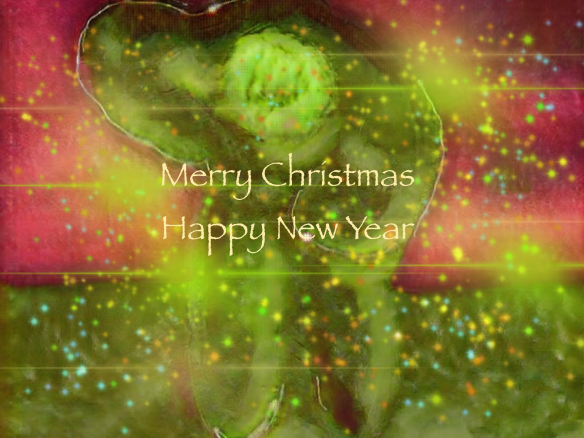
Petervan Artwork © 2020 - Yellow Speed - Acryl on Canvas - 50 x 50 cm


Petervan Artwork © 2020 - Yellow Speed - Acryl on Canvas - 50 x 50 cm

An irregular, unpredictable, incoherent, unfocused set of mind-sparks that got me thinking. Handpicked, no robots. Minimalism in curation. Enjoy!
If you can’t get enough of these and want more than 5 articles, you can hang on to the firehose, the extended version of Petervan’s Delicacies in REVUE. Subscribe here: https://www.getrevue.co/profile/petervan

Petervan Artwork © 2019 - Walk In The Park Video mix based on Insta360 One capture
Petervan Artwork © 2019 - iPhone 11 Pro - Soundscape in Garageband
Petervan Artwork © 2019 - Insta360 ONE camera - Soundscape in Ableton Live

The latest version of Delicacies is here: https://www.getrevue.co/profile/petervan/issues/petervan-s-delicacies-issue-125-193906
Enjoy!

There is a new edition of Petervan’s Delicacies. Number 124. An irregular, unpredictable, incoherent, unfocused set of mind-sparks that got me thinking.
As an appetizer, the last one on this edition is about Nakatomi Space, the tower that McClane explores in Die Hard via elevator shafts and air ducts, crashing through windows from the outside-in and shooting open the locks of rooftop doorways.
This is about “A ghostlike military fantasy world of boundless fluidity, in which the space of the city becomes as navigable as an ocean.” The physical walking-through-walls is a strong metaphor for radical innovation
Check-out issue #124 here. And if you like it, subscribe to future (unplanned, unguaranteed, unfocused) edition here.
This is a supplement to my post about the end-of-year assignment Art and Culture at the Academy of Visual Arts in Ghent.
Dutch version here.
Dear Fiorella,
Your lessons were always fun for me. You speak in poetic and philosophical words and sentences. I have written them all down and someday I will publish an anthology of them. Chris and Inge advised me to use them as inspirations for my paintwork.
Here are a few examples of sentences and statements that flow from your mouth:
THE CHESSBOARD IS EMOTIONLESS
A GOOD ARTWORK DOES NOT GIVE ANSWERS
THE INTENSITY OF SLOWNESS
BEING BROKEN IS A STATE OF BEING
WORKING WITH CLAY DOESN’T MAKE NOISE
WE CAN ONLY SEE EMPTYNESS WHEN WE FILL IT
THERE SHE LIES IN ALL HER GREATNESS
LYING IN DEATH
360 POSSIBLE VIEWS
IN RELATIONSHIP WITH THE ENVIRONMENT
AND KEEPING TRACK OF THEM IN OUR HEAD
“THE PARCOURS”
CREATION OF THE POSSIBILITIES
TO LET THE IMAGE EMERGE
BLOCKING OF THE VISUAL BRAIN
WHEN IS SOMETHING BECOMING TIRING?
WHEN YOU CANNOT DETERMINE YOUR OWN TEMPO
YOU CAN TAKE A SMALL STEP
TAKING A HUGE SPACE AT THE SAME TIME
THE BRAIN IS LIKE AN OFFICE
A HOUSE WITH ROOMS
SOMETIMES YOU NEED OTHER KEYS
With gratefulness,

Dit is een aanvulling op mijn post over de eindejaarsopdracht Kunst en Cultuur aan de Academie voor Beeldende Kunsten in Gent.
Dutch version. English translation here.
Fiorella,
Je lessen waren voor mij altijd genieten. Je spreekt in poëtische en filosofische woorden en zinnen. Ik heb ze allemaal opgeschreven en ooit publiceer ik een bloemlezing van ze. Chris en Inge hebben me aangeraden om ze te gebruiken als inspiraties voor mijn schilderwerk.
Hier zijn een paar voorbeelden van zinnen en statements die zo uit je mond vloeien:
HET SCHAAKBORD IS EMOTIELOOS
EEN GOED KUNSTWERK GEEFT GEEN ANTWOORD
DE INTENSITEIT VAN DE TRAAGHEID
BREUK IS EEN STAAT VAN ZIJN
MET KLEI BEZIG ZIJN MAAKT GEEN LAWAAI
WE KUNNEN EEN LEEGTE PAS ZIEN ALS WE ZE VULLEN
DAT LIGT DAAR IN ZIJN GROOTSHEID
DOOD TE LIGGEN
360 MOGELIJKE STANDPUNTEN
IN RELATIE MET DE OMGEVING
EN DIE IN ONS HOOFD HOUDEN
“HET PARCOURS”
CREATIE VAN DE MOGELIJKHEDEN
OM HET BEELD TE LATEN ONTSTAAN
BLOKKEREN VAN HET VISUELE BREIN
WANNEER WORDT HET VERMOEIEND?
ALS JE JE EIGEN TEMPO NIET MEER KAN BEPALEN
JE KAN EEN KLEINE STAP ZETTEN
EN DAARDOOR EEN ENORME RUIMTE INNEMEN
DE HERSENEN ZIJN ALS EEN BUREAU
EEN HUIS MET KAMERS
SOMS HEB JE ANDERE SLEUTELS NODIG
In dankbaarheid,
